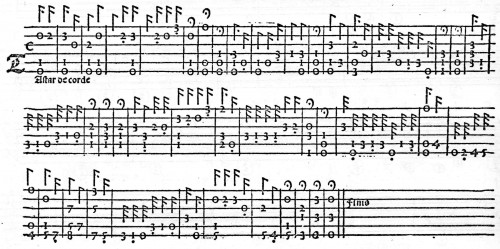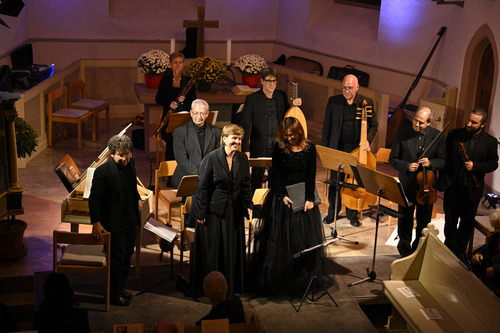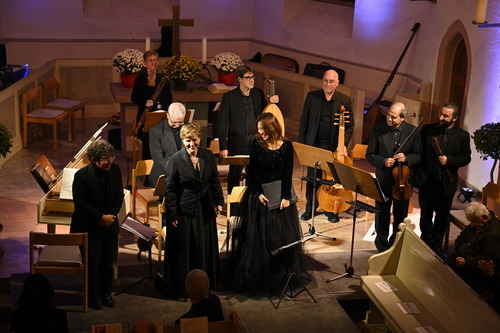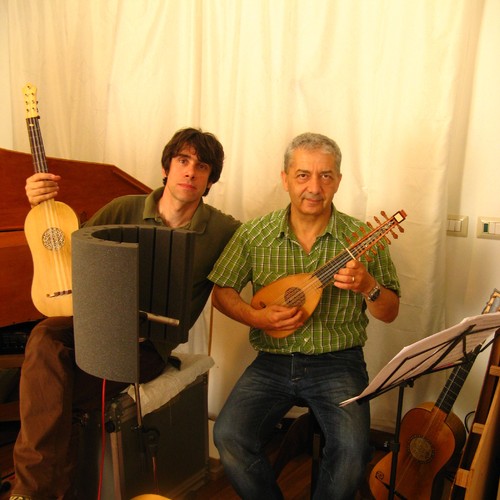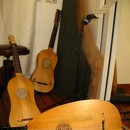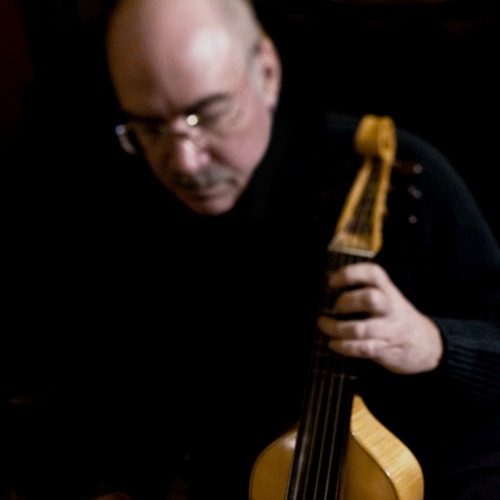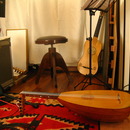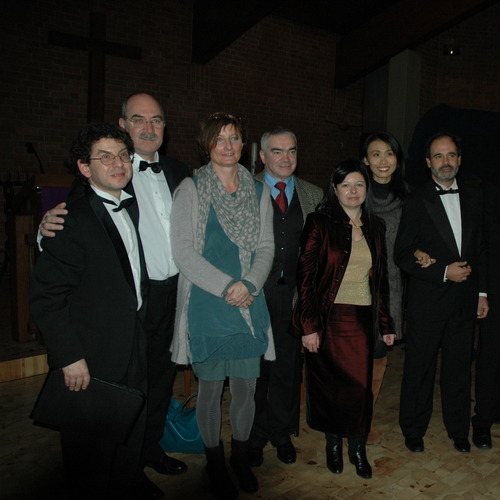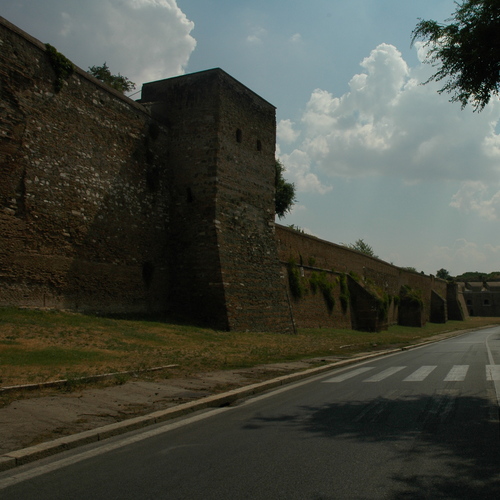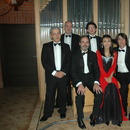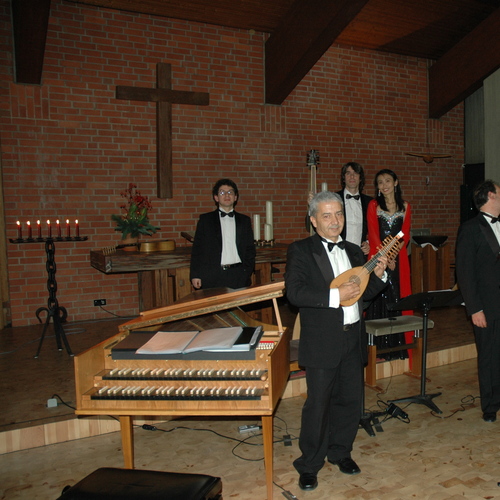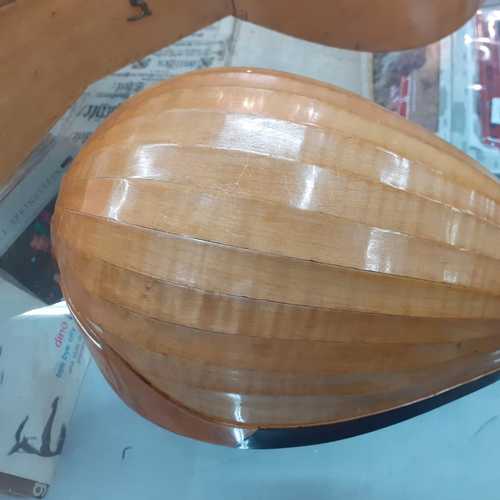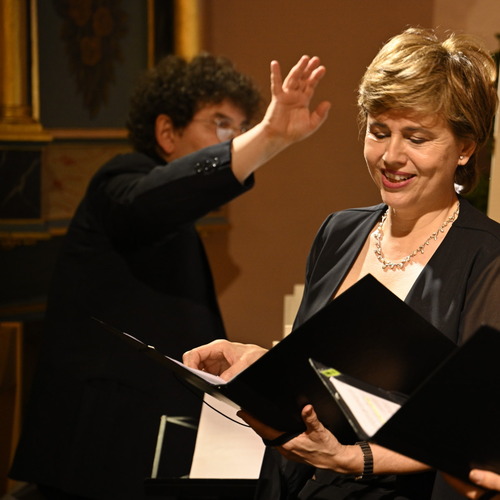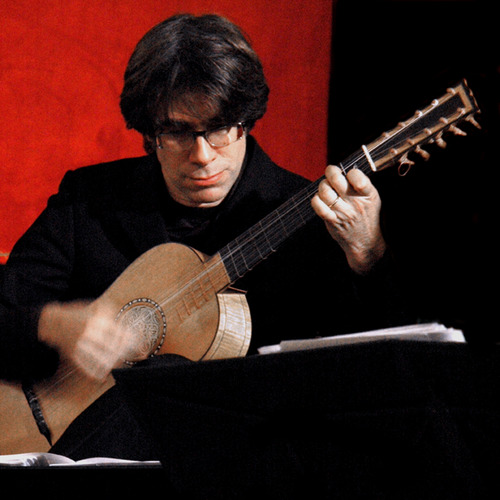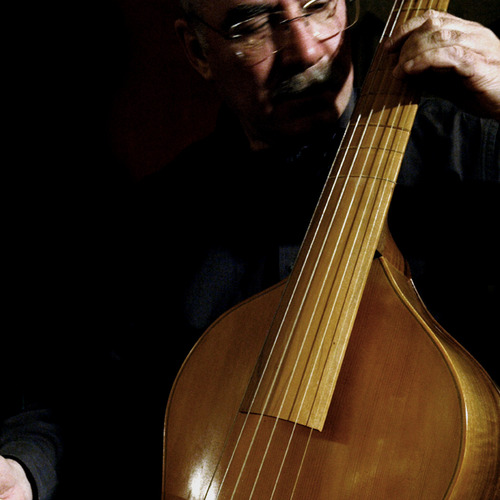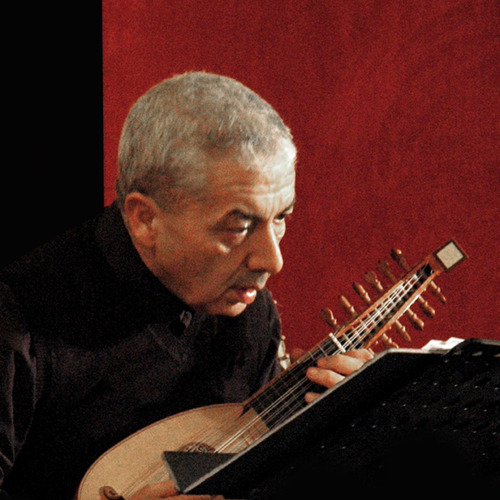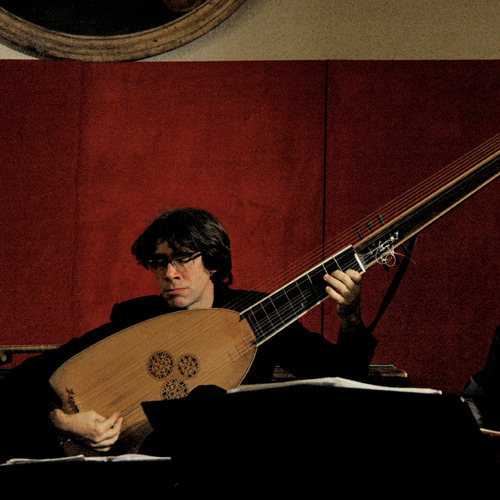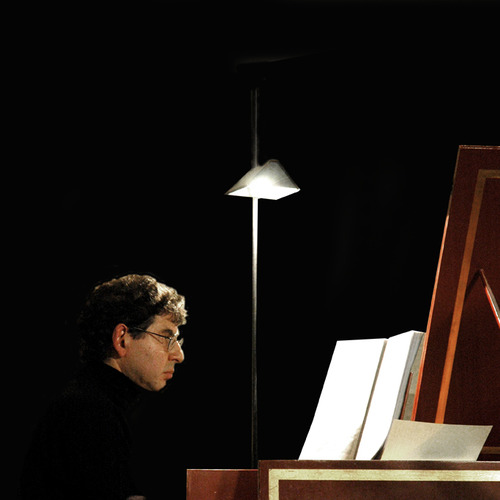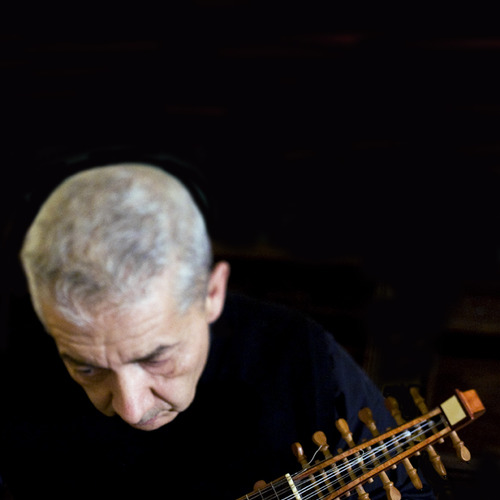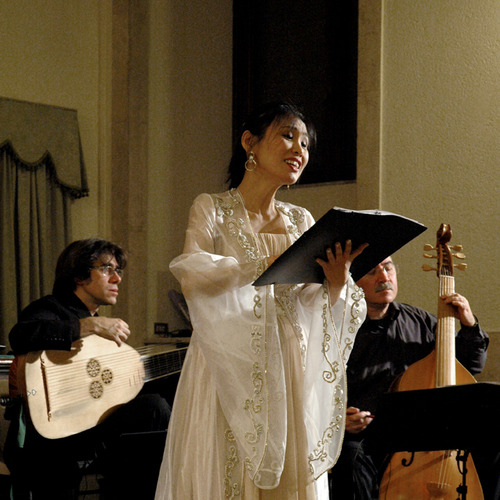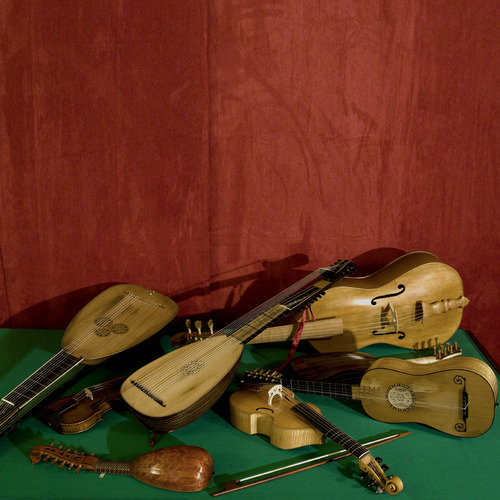Concerto unico: artisti splendono con il Barocco
“...La musica italiana ha più da offrire che il popolare O sole mio […] Domenica sera sei musicisti italiani hanno mostrato tutto ciò che la loro cultura ancora racchiude in sé […] Allegra, leggera e danzante è la musica italiana rinascimentale e barocca […] E proprio così il gruppo di musica antica Tastar de Corde ha presentato i propri pezzi di quell’epoca […] L’originale ed inconfondibile atmosfera barocca viene richiamata dai musicisti attraverso strumenti contemporanei dell’epoca […] Particolarmente bravi Enrico Orlando al violino e la soprano Hyo Soon Lee […] Già dopo i primi pezzi si vedeva che il concerto sarebbe stato un successo. Il pubblico ha premiato il gruppo italiano, venuto solo per questo concerto, con lunghi applausi.”
(Vanessa Biermann, “Der Westen” - Germania)
http://www.derwesten.de/staedte/bergkamen/Kuenstler-brillieren-mit-Barock-id4055431.html
Barocco entusiasma il pubblico
“Concerto incomparabile con strumenti d’epoca. Artisti italiani eccellono per le loro capacità. Già dai primi pezzi si capiva che il concerto sarebbe stato un grande successo, anche il violinista Enrico Orlando stupiva […] La soprano Hyo Soon Lee entusiasmava il pubblico di Bergkamen […]”
(Vanessa Biermann, “Waz/Wr” - Germania)
Concerto con piccoli gesti e molto sentimento. Il gruppo Tastar de Corde incanta con musica e canto
“Volevano sedurre gli spettatori e così hanno fatto: il gruppo Tastar de Corde ha incantato il pubblico nella ‘Friedenskirche’ con piccoli gesti e molto sentimento. Come la soprano Hyo Soon Lee nel suo abito lungo inizia a cantare, si trattiene il fiato […] Il viaggio può cominciare: sei musicisti contemporanei mostrano che l’Italia ha molto di più da offrire, dei vari Eros Ramazzotti, Laura Pausini e Zucchero […] Il consolato italiano di Dortmund e la città di Bergkamen avevano anticipato e promesso nell’ambito culturale un ‘concerto speciale’ e non hanno esagerato ad affermare ciò […] sono riusciti magistralmente ad interpretare la musica italiana vocale e strumentale del XVII secolo. Musica rinascimentale e musica barocca ai livelli più alti […] Il concerto del gruppo a Bergkamen è stato l’unico in Germania: una delizia speciale alla fine di un anno dedicato alla cultura […] Prima del concerto, il Dott. Galipò, aveva premesso che la formazione Tastar de Corde ha la capacità di produrre sonorità affascinanti grazie al “vitale amalgamarsi dei diversi strumenti”: ed aveva ragione. Questa esecuzione musicale ha destato il desiderio della replica: se fosse stato possibile, molti ascoltatori avrebbero premuto il tasto ‘play’ più volte […] Il gruppo ha affascinato il pubblico nella ‘Friedenskirche’ con molto sentimento. I musicisti hanno mostrato perché l’Italia durante il Rinascimento fosse al centro del mondo culturale.
(Ricarda Wenge, Hellweger Anzeiger - Germania)
‘Suoni affascinanti’
“[…] Tastar de Corde entusiasmava con musica rinascimentale e barocca […]”
(Ricarda Wenge, Westfälischer Anzeiger - Germania)
Höchster Kreisblatt
Suoni pervasivi e rari
"14° Mendelssohn Tage“ — Un concerto di sostanza e d’apertura della stagione che ripercorre lo sviluppo [dal Rinascimento] fino al barocco
I nobili, che si volevano fare rispettare, attiravano pensatori e scrittori, pittori e musicisti nelle loro corti. Tra Dresda e Mannheim, Detmold e Bünau, vi fu una vivace competizione in termini di arte e cultura durante il periodo barocco. A volte, i nobili praticavano persino l'arte della musica strumentale, come Federico II di Prussia o il langravio Ernst Ludwig, residente a Darmstadt. Quest’ultimo aveva acquisito una certa abilità con la viola da gamba ed era anche abile nella composizione come attestato dai pezzi strumentali e inni sacri che adornano il suo catalogo di opere. Aveva anche il buon giudizio riguardo all’esecuzione della musica. In effetti, quando la posizione di Vice Kapellmeister dovette essere ricoperta nel 1709, scelse Christoph Graupner, che si era fatto un nome come clavicembalista e compositore.
Il concerto barocco, che ha segnato l'inizio dei "14° Mendelssohn Tage”, ha enfatizzato esplicitamente questo aspetto storico regionale. La sua seconda parte conteneva opere sia del langravio che di Graupner e del suo allievo Johann Kuhnau. Con l'ensemble di suoni originali italiani Tastar de Corde, il fondatore e organizzatore della serie di concerti lanciata nel 2006, Dr. Jürgen Frei, ha scelto degli esperti eccellenti per la musica di questa era. Con un timbro colorato quanto trasparente, suonavano la sinfonia della Suite in F maggiore del langravio – un'opera nel gusto del tempo, ma allo stesso tempo dignitosa nel lavoro manuale – sotto la pesante volta della Chiesa evangelica al Quellenpark.
Energico, ma leggero
L'ouverture e l'aria della suite Graupner in do maggiore e la cantata "Umiliati ora sotto la mano voluta di Dio" hanno fatto da cornice alla sinfonia. I manoscritti originali di queste opere sono conservati nella Biblioteca dell'Università di Darmstadt, come mostrava il foglio dettagliato del programma. Marcello Candela ha guidato il sestetto strumentale dal clavicembalo con un impulso energico [n.d.t. “ricco di energia”] e Anche Ursula Kramer (fagotto barocco) e Mario Brucato (flauto dolce) aggiungevano una colorazione tenera. Il corpus era composto da strumenti a corda di Enrico Orlando (violino), Gianluca Schingo (liuto e tiorba) e Antonio di Trapani (viola), che avevano un'ottima padronanza dei loro strumenti.
Un piacere squisito
Le voci luminose e agili dei due soprani, Sabine Schaan e Hyo Soon Lee, si completavano magnificamente sia nella cantata di Graupner che nel "In te, domine speravi" messo in musica da Kuhnau. Era proprio come se i musicisti facessero parlare queste opere, sciogliendole la lingua. Intanto, il “filo conduttore” del concerto è andato ancora oltre, come ha spiegato Jürgen Frei. Infatti, la prima parte del concerto riconduceva ai loro predecessori e ai loro fornitori di idee fino alla cultura rinascimentale a sud delle Alpi.
Il pezzo di apertura, una Sinfonia di Giovanni Francesco Anerio, fu impressionante per il suo carattere festivo, al quale contribuì anche il cornetto, uno strumento all'epoca comune, il cui suono penetrante ha il colore di una tromba nasale. Come si fa con la tromba o il corno, il musicista crea il suono nel corpo curvo fatto di corno o avorio usando un bocchino. Mario Brucato lo fece dalla galleria, quasi come un araldo. Opere di Girolamo Frescobaldi, Giacomo Carissimi, Ruggiero Giovannelli e Giovanni Pierluigi da Palestrina hanno dimostrato la ricchezza del suono polifonico e la cultura compositiva di questa epoca. Tutto questo è stato svolto a un altissimo livello artigianale e musicale. La linea di fondo è stata un concerto sostanziale e ben ponderato, in cui, a parte la componente didattica, il piacere squisito non è stato trascurato. Il concerto ha tracciato con successo le linee di sviluppo della cultura musicale europea dal Rinascimento al Barocco.
(Ulrich Voller, Höchster Kreisblatt, traduzione di Sebastian Arnold)
Bad Sodener Zeitung — Inizio concerti del “14° Mendelssohn Tage”
“La Roma barocca musicale” - musica barocca nella chiesa protestante
Lo scorso sabato sera l'ensemble italiano Tastar de Corde ha dato il via alla serie di concerti dei "14° Mendelssohn Tage” sotto il motto "La Roma barocca musicale", trasportando il pubblico seduto nella chiesa protestante al mondo musicale del barocco.
Su strumenti antichi come il clavicembalo, il liuto e la viola da gamba o il cornetto, i musicisti hanno mostrato sotto la direzione artistica di Marcello Candela, docente di musica d'insieme per strumenti antichi al Conservatorio G. B. Martini di Bologna, perché l'Italia nel Rinascimento fu il cuore del mondo culturale. Il viaggio musicale è andato dagli inizi della musica barocca alla sua fioritura, da Roma a Lipsia e a Darmstadt, da Giovanni Pierluigi Palestrina – probabilmente il rappresentante più noto della "Scuola romana" e il suo centro la Cappella Sistina papale – a Johann Kuhnau e Christoph Graupner.
Ognuno dei 13 brani musicali presentati è stato unico ed è stato riscritto in notazione moderna specialmente per il concerto di Bad Soden. I momenti salienti della serata musicale sono stati senza dubbio il "Summi Regis Puerpera" di Giacomo Carissimi e "Amo te, Laudo te" di Vincenzo Albrici, in cui si potevano ascoltare le armonie tipiche della "scuola romana". Il canto, con le sue decorazioni barocche, è stato messo in scena in modo particolarmente virtuoso e di gran effetto dai due soprani Hyo Soon Lee e Sabine Schaan, entrambi vestite in nero, che stavano di fronte alla sala del coro illuminato in viola liturgico. La gioia di vivere e la gioia del barocco si fondevano con l'atteggiamento strettamente ascetico del Pietismo verso un delizioso insieme musicale.
I "14th Mendelssohn Days of Music" sono organizzati dalla fondazione musicale Jürgen Frei di Bad Soden e dall'Ufficio per la cultura e gli eventi della città di Bad Soden am Taunus.
(Traduzione di Sebastian Arnold)
